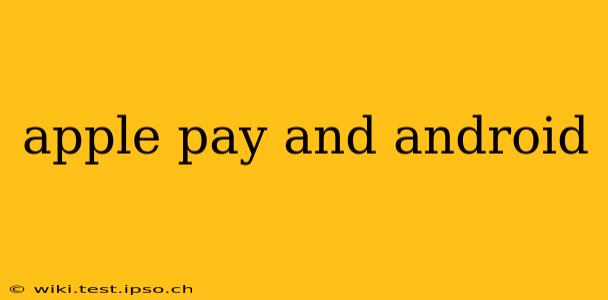Apple Pay and Google Pay (formerly Android Pay) are the leading mobile payment systems, offering users a convenient and secure way to make purchases. While both share the core functionality of contactless payments, several key differences set them apart. This in-depth comparison will explore these differences, helping you understand which system best suits your needs.
What is Apple Pay?
Apple Pay is a contactless payment system developed by Apple Inc. It utilizes Near Field Communication (NFC) technology to enable payments through iPhones, Apple Watches, iPads, and Macs. Security is a cornerstone of Apple Pay, employing tokenization – a process that replaces your actual credit card number with a unique digital token for each transaction. This ensures your financial information remains protected even if your device is compromised. Apple Pay boasts a wide range of supported banks and credit unions, offering broad acceptance across many retailers.
What is Google Pay?
Google Pay, initially launched as Android Pay, is Google's mobile payment platform compatible with Android devices and a growing number of other devices. Similar to Apple Pay, it leverages NFC for contactless payments and employs robust security measures. Google Pay also integrates with other Google services, providing a seamless experience for users within the broader Google ecosystem. The breadth of supported banks and its availability across various devices contribute to its widespread adoption.
What are the key differences between Apple Pay and Google Pay?
While both systems offer similar functionality, several key distinctions exist:
-
Device Compatibility: Apple Pay is exclusively available for Apple devices, limiting its reach to iPhone, Apple Watch, iPad, and Mac users. Google Pay, on the other hand, enjoys broader compatibility, extending to a wider range of Android devices and even some wearables from other manufacturers.
-
Integration with other Services: Apple Pay integrates seamlessly within the Apple ecosystem, providing a smooth user experience across Apple devices and services. Google Pay benefits from tighter integration within the Google ecosystem, connecting to services such as Google Assistant and Google Wallet for a more unified experience.
-
User Interface: Both platforms boast intuitive user interfaces, but the specific design and layout differ. Apple Pay typically emphasizes simplicity and ease of use, with a minimalist design. Google Pay provides slightly more options and features, offering a more comprehensive, albeit potentially slightly more complex, experience.
-
Rewards Programs: Both platforms often integrate with various loyalty and rewards programs, but the specific offerings and partnerships vary depending on your region and participating banks.
-
Availability: While both are widely accepted, certain retailers might favor one over the other. Availability also depends on geographic location; some regions might have a higher concentration of merchants supporting one platform over another.
Which mobile payment system is better?
The "better" system depends entirely on your personal preferences and technological ecosystem. If you're heavily invested in the Apple ecosystem, Apple Pay offers a seamless and integrated experience. If you use an Android device or prefer the broader compatibility and integration offered by Google's services, Google Pay is likely the better choice. Consider your device, preferred services, and merchant acceptance in your area when making your decision.
How secure are Apple Pay and Google Pay?
Both Apple Pay and Google Pay prioritize security. They employ tokenization, encrypting your card details and using unique digital tokens for transactions instead of your actual card information. This minimizes the risk of fraud, even if your device is lost or stolen. Both platforms also implement multiple layers of authentication, such as biometric verification (fingerprint or facial recognition) for added security.
What are the advantages of using Apple Pay and Google Pay?
The advantages are numerous and shared by both systems:
- Convenience: Contactless payments speed up the checkout process, eliminating the need for fumbling with cash or cards.
- Security: Tokenization and multiple authentication layers significantly enhance security compared to traditional card payments.
- Rewards Programs: Many retailers integrate with these payment systems, allowing you to accumulate points or cashback rewards.
- Ease of Use: The user interfaces are designed for simplicity and ease of use, even for users unfamiliar with mobile payments.
Can I use Apple Pay and Google Pay on the same device?
No, you cannot use both Apple Pay and Google Pay on the same device simultaneously. Apple Pay is exclusive to Apple devices, while Google Pay operates primarily on Android devices. Using both would require having separate Apple and Android devices.
Are there any fees associated with using Apple Pay or Google Pay?
Generally, there are no fees associated with using either Apple Pay or Google Pay for consumers. However, merchants may incur transaction fees, depending on their payment processing agreements.
This comprehensive guide provides a detailed understanding of Apple Pay and Google Pay, allowing you to make an informed decision based on your individual needs and device usage. Remember to consider factors like device compatibility, ecosystem integration, and regional availability when making your selection.
